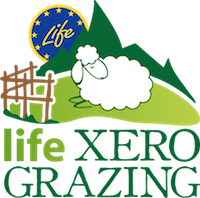Justification of its use
- In Eng
- Hits: 2817
 As in other areas of Europe, habitat 6210* has suffered the consequences of the progressive reduction in the use of traditional practices and the absence of management tools, which has enabled the establishment of evolutionary degradation sequences (changes in the flora, invasion of shrubs and trees). These sequences have developed particularly fast in this area due to the terrain being of medium to low altitude.
As in other areas of Europe, habitat 6210* has suffered the consequences of the progressive reduction in the use of traditional practices and the absence of management tools, which has enabled the establishment of evolutionary degradation sequences (changes in the flora, invasion of shrubs and trees). These sequences have developed particularly fast in this area due to the terrain being of medium to low altitude.
In this sense, among the people within the SCI, entrusted to manage at Ente protette delle Alpi Cozie (with reference to the habitat 6210*), the SCI IT1110030 was presented, not only as one of the areas containing more flora (taking into account the extent and wealth of orchids), but also as the most threatened and degraded by absence of use. In addition, (unlike other areas in the SCI) pastoral management (in this area) has been found to be of greater difficulty due to insufficient on-site services (e.g. water points), the steep topography and the low forage value of grasslands; features which when combined make the site especially suitable for grazing, with sheep or goats for short periods.
The uniqueness of the habitat, the need to restore large areas and initiate a long-term conservative management plan, the increased vulnerability due to the rapidity of succession are all factors which have led to choice of the SCI IT1110030 as the project area.
In this context, the purchase of a service flock is the only solution to ensure the sustainable use of the SCI area.
The pastoral investments in the territory (water points, fences and animals) will make the SCI management, sustainable in the long term by enhancing and improving marginal mountain areas currently not being considered from the point of view of production by local migratory companies.
It is known that grazing represents a valid, active and conservative habitat management plan which is important for the local economy in rural areas, both to maintain the aesthetic value of the sites and for the commercial benefit of the community. With a long-term view, local authorities will then grant land use upon payment of a fee for grazing or for maintenance when it is deemed necessary.
Through the improvements made and the grazing periods planned (spring and autumn, with the aim to preserve orchids and rare stenomediterrany species), the grasslands could once again be attractive to migratory flocks.






